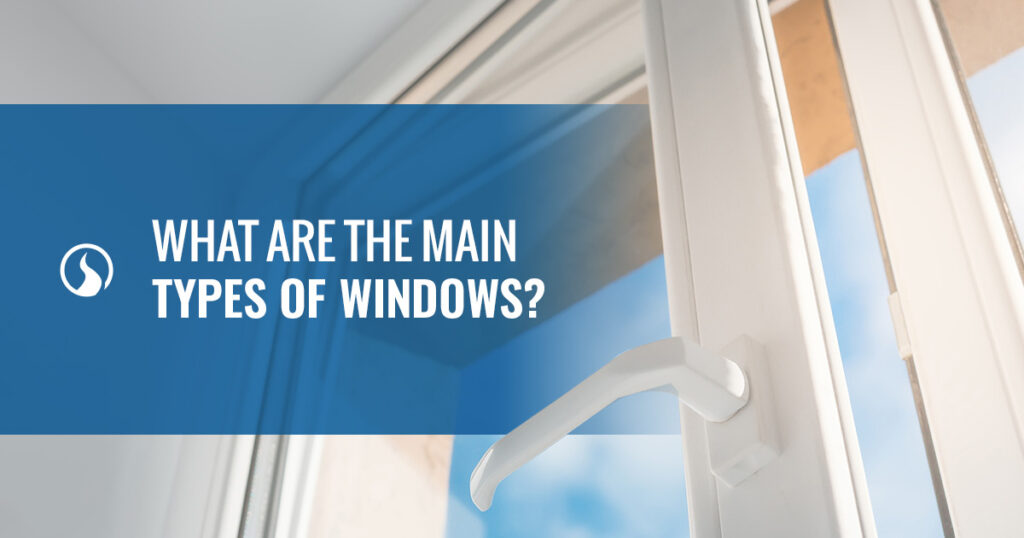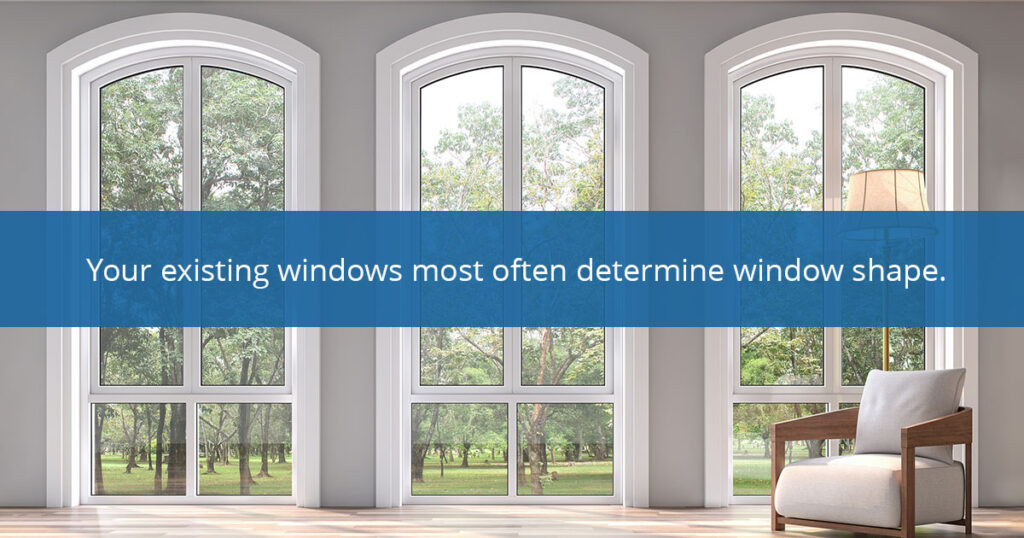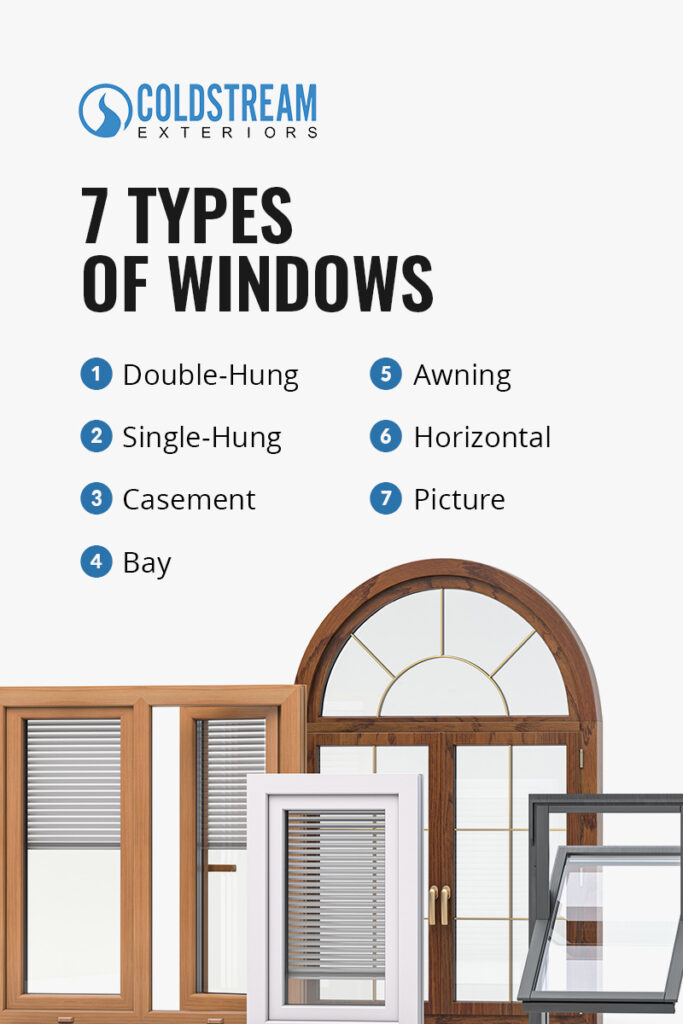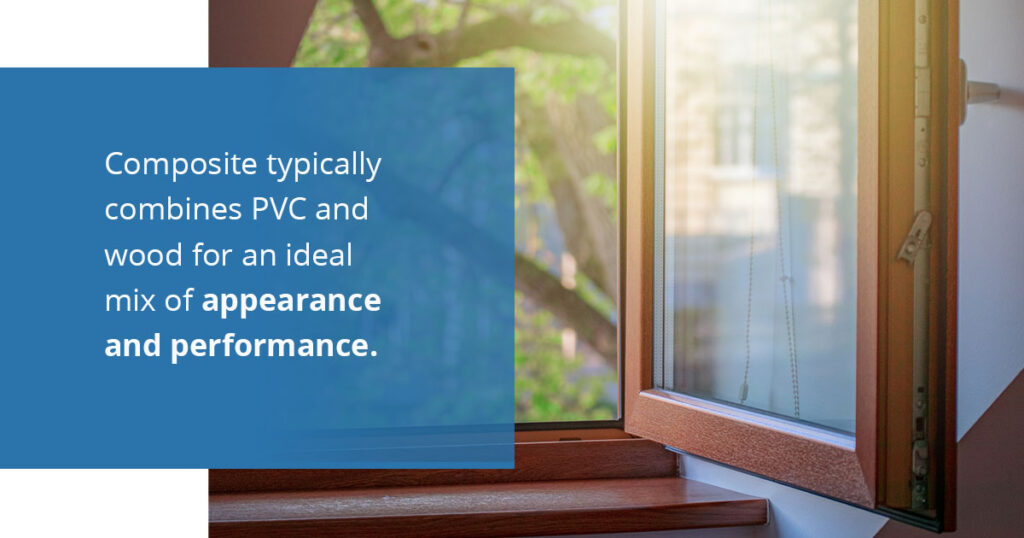Choosing the Best Window Type for Your Home’s Unique Needs

Windows bring light and style to your space while complementing your home’s exterior. The right windows can completely transform your home’s look — getting the best one can influence how it feels and its resale value. With so many window options available, how do you know where to start?
If you’re considering a window replacement in Cincinnati or St. Louis, you need to know the types of windows for your home. Shape, style and material will all influence the final product. The right window will work with your budget and provide a good seal against the environment all year.
Types of Window Shapes
If your windows are nearing the end of their life span, you’ll have to start exploring replacement options. Older windows are less energy-efficient and show signs of wear that can make your home look more aged or less polished. One of the first places to start with new windows is window shapes — your existing window shapes will influence this, but there are options if you want something different:
- Rectangle: The classic window shape. Rectangular windows are the most common, and you’ll have no shortage of window styles with this shape.
- Square: You might have square windows installed in a row or used as accents if they’re smaller. Large square windows are also available.
- Round: Round is seen less often than rectangle and square, but it’s commonly used for accent windows. You might see them in attics or bathrooms.
- Half-Round: These windows are rounded on the top but rectangular on the sides — like arched windows. You’ll often see half-round designs as transom windows over doors or rectangular windows.
- Other: Other window shapes like hexagons, triangles and trapezoids are uncommon. You need a unique form to fit these windows, and they tend to be statement pieces thanks to their unusual shape.
Your existing windows most often determine window shape. You can change up the shape, but it will cost more if you have to adjust the frame to fit a new window design. You should always consult an expert for window installation, especially if you want to change the shape. Performing DIY window installation can have consequences if you do the installation improperly.

7 Types of Windows
With the right windows, you can allow light in and enjoy attractive, energy-efficient protection from the elements. While you could explore many smaller window types, learning the seven main types of windows will allow you to see what offerings there are without getting lost. Each of these window types has a distinct look with its benefits so you can select the right option for your home.
1. Double-Hung
Double-hung windows are one of the most common window styles. They’re rectangular, often with smaller rectangle designs inside the glass and open on both panels. The parts of a double-hung window allow it to open two ways — top and bottom — so you can choose how you want to use your window. The window sash enables you to pull the bottom section up or bring the top down so you can open both window parts independently, making them easier to clean.
Double-hung windows are more expensive than single-hung since they open in two areas. While these windows are incredibly convenient to use and look timeless, they can get stuck over time. Since they open against gravity, you’ll need to maintain them, or they can become permanently stuck shut. They’re sealed well but are only completely weathertight with some extra sealing. However, their widespread availability and affordable prices make them an excellent choice for most homeowners.
2. Single-Hung
Single-hung windows are also extremely popular. They’re similar to double-hung windows, but they only have one panel that opens. The top panel or sash stays still and does not open when the bottom section moves. With only one panel that opens, single-hung windows are less expensive than double-hung.
Since single-hung windows look and operate almost like double-hung, they share the same downsides. The potential for sticking is still there, and you might need some extra sealing help to maximize your energy efficiency. They’re easy to clean and take less effort to replace than more unique window styles.
3. Casement
Casement windows are a classic window style. They’re vertical windows that feature a crank mechanism for opening the window instead of the pushing method double- and single-hung windows use. Casement windows open left or right — you use the crank to swing the window out like a mini door. These window styles are ideal for anyone looking to get maximum air ventilation from their windows.
Casement windows are popular kitchen windows since you can crank the entire window open instead of only partially opening the window like single-hung windows.
You can expect high-quality casement windows to last with little issue. However, older or poorly maintained models need more attention. Their crank mechanisms can wear down over time and need replacing. Additionally, it isn’t easy to clean the outside of a casement window. If you’re looking for a cost-effective, lasting window option, casement windows would be perfect for your home.

4. Bay
The term “bay window” describes multiple windows joined together and extending from your house. Picture a cozy reading or breakfast nook that sticks out slightly and has three sides — that’s a bay window. Bay windows are not curved — they’re all straight, and the frame joins them at an angle to make a semi-circle without rounded lines. Traditionally, the center window is fixed in place, and the two side windows are double-hung, single-hung or casement windows that can open.
Bay windows add visual interest to your home and create a comfortable nook. However, adding an extension to your home so you can have bay windows is more expensive than simply replacing your existing windows. If you already have bay windows and are looking for an upgrade, the price will depend on the windows you choose, but it could be less expensive.
5. Awning
Awning windows get their name from the awnings they mimic. These windows push out at the bottom and can sit open at a diagonal, allowing you to get fresh air even during rain. The open window blocks water from getting inside while staying open, making for an excellent breeze-maker. The mechanical parts may need repair eventually as they wear down, but they’re cost-effective windows overall.
Awning windows use a crank mechanism to operate — this mechanism can take some force to work, but you should have an easy time using it if you open your window regularly. Additionally, awning windows have an excellent seal, reducing energy loss. Since they open outward, they can block pathways outside. You might want to keep them on the second floor to prevent them from cutting into walking space around your home’s exterior.
6. Horizontal
Horizontal windows open side-to-side instead of up or down like vertical windows. These windows are widespread — their sliding opening makes them convenient to clean from the inside, and they’re affordable. Because they’re horizontal, they’re wider than vertical windows. You can get these in single- or double-slide style, where one or both sides can open. The single-slider option is generally less expensive than the double-slider.
While these windows are affordable, they’re less energy-efficient than other models. They’re also prone to collecting dirt and grime in the sliding channel. These windows are typically used in basements since they’re less aesthetically appealing than traditional vertical windows. With few mechanical components, there’s less upkeep needed.
7. Picture
Picture windows are immobile windows with no lines or components blocking the view to the outside. They’re ideal for homeowners looking to let in a lot of natural light without needing airflow. With no opening components, there’s less maintenance required, and they’re more affordable than many windows of the same size, as they can’t open and are extremely weathertight.
However, they can be less energy-efficient — all that glass space can lead to heat leaving your home through the glass in the winter and too much heat from sunlight coming through in the summer. You can address these issues with curtains and energy-saving glass options. The other significant downside is that picture windows don’t open. If you want airflow, you’ll need a different window option.
Types of Window Frames
Once you’ve selected a window type, you need to choose a window frame. Frames are essential for any window installation — they hold the glass, help seal your home from the elements and complement your window shape. Each material has strengths, so look for a window frame that complements your window without sacrificing quality or aesthetics.
Wood
Wood’s durability and versatility have made it a core home component for hundreds of years. It’s popular thanks to its timeless look and natural textures. You can get your wood frames to last for decades with good maintenance. However, their natural qualities and high maintenance needs make them more of an investment than other frame materials.
Wood is susceptible to moisture, warping and rot. Wood frames need regular repainting and resealing to keep out water — moisture will rot, crack and warp wood. Improper sealing can lead to wood swelling, making your windows hard to shut. If you’re willing to invest the time and money into wood frames, they make a beautiful, lasting accent for any window.
Vinyl
Vinyl is an extremely popular window frame material. Made from polyvinyl chloride (PVC), it’s highly customizable and strong. PVC can be molded into virtually any shape, allowing it to fit easily around unique window styles. Since it’s synthetic, it won’t rot or warp when exposed to water.
You should avoid painting vinyl frames yourself. Manufacturers will paint the frames to ensure an even, durable coating. If you think you will change your window color shortly, choose a different material or a neutral shade.
Composite

Composite typically combines PVC and wood for an ideal mix of appearance and performance. Composite windows look like wood, giving you the classic texture that complements so many architectural styles. But the addition of vinyl makes these options durable and easy to maintain.
Because composite windows contain wood, they’re often more of an investment than vinyl windows. Some composite windows may not seal out wind as well as other materials do, either. Composite windows can be painted, but that means their color may not last as long as a vinyl window’s coating.
Fiberglass
Fiberglass is almost as expensive as wood, but this cost includes its high durability, weather resistance and easy maintenance. Fiberglass will stand up to wear much better than other materials. Fiberglass will not expand or contract as dramatically as wood when the temperature changes rapidly. Aside from the higher price, one potential drawback of fiberglass is its finish — it often needs touch-ups to keep it looking new.
As you can see, each material has its pros and cons. Fiberglass has the best-staying power but runs on the more expensive end of materials. Wood is also costly and requires lots of maintenance. Composite offers the benefits of vinyl and wood but at an investment. Vinyl provides good durability and cost-effectiveness, though it’s less durable than fiberglass.
Factors to Consider When Choosing a Window Type
Now that you know all the basics of windows, you’ll need to consider several factors to make your choice. Knowing what you want and your options will help you find the right windows for your home. Keep the following factors in mind when looking for window replacements in St. Louis or Cincinnati:
- Energy efficiency: The more energy-efficient your windows are, the more you’ll save on your energy bills in the long term. Less energy-efficient models might be cheaper upfront, but they can add to your regular expenses year after year. With energy-efficient window options, you’ll keep your bills low and your home more comfortable.
- Use: How much do you want to use your windows? Picture windows are an excellent option if you’re only interested in natural light. However, if you want any airflow from your windows, you should choose a style that lets you conveniently open them.
- Budget: Custom windows, improved energy efficiency and material will all impact your total window cost. However, you need to balance these upfront costs with long-term returns or savings. Windows might help boost your home value or reduce your energy costs. Go over your budget with your window expert and find the best solution for your needs.
Choose Coldstream Exteriors For Your Next Window Replacement

Coldstream Exteriors has been delivering unmatched window, roofing and siding services in the Cincinnati and St. Louis areas for over 25 years. With industry-leading warranties and excellent financing options, Coldstream Exteriors will provide you with above-and-beyond customer service. Choose our window installation and replacement services for your next window job — we carry a range of options to fit your unique home, needs and budget, from wood and vinyl to fiberglass and composite.
We’re top-rated by Home Advisor and have an A+ rating from the Better Business Bureau. You can depend on us to deliver high-quality, lasting exterior services to your home. If you’re interested in our services, contact us online to schedule your free inspection today.
